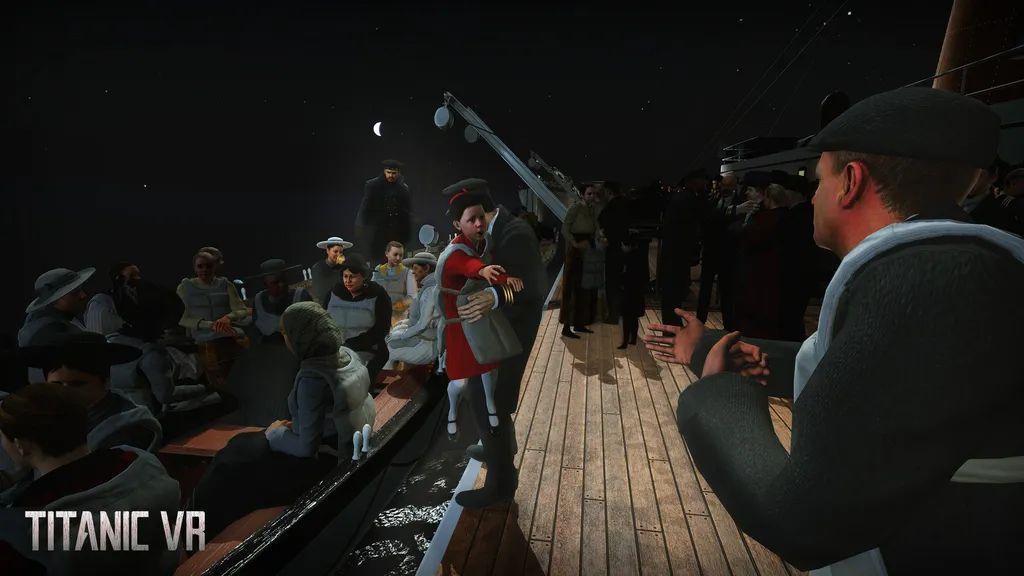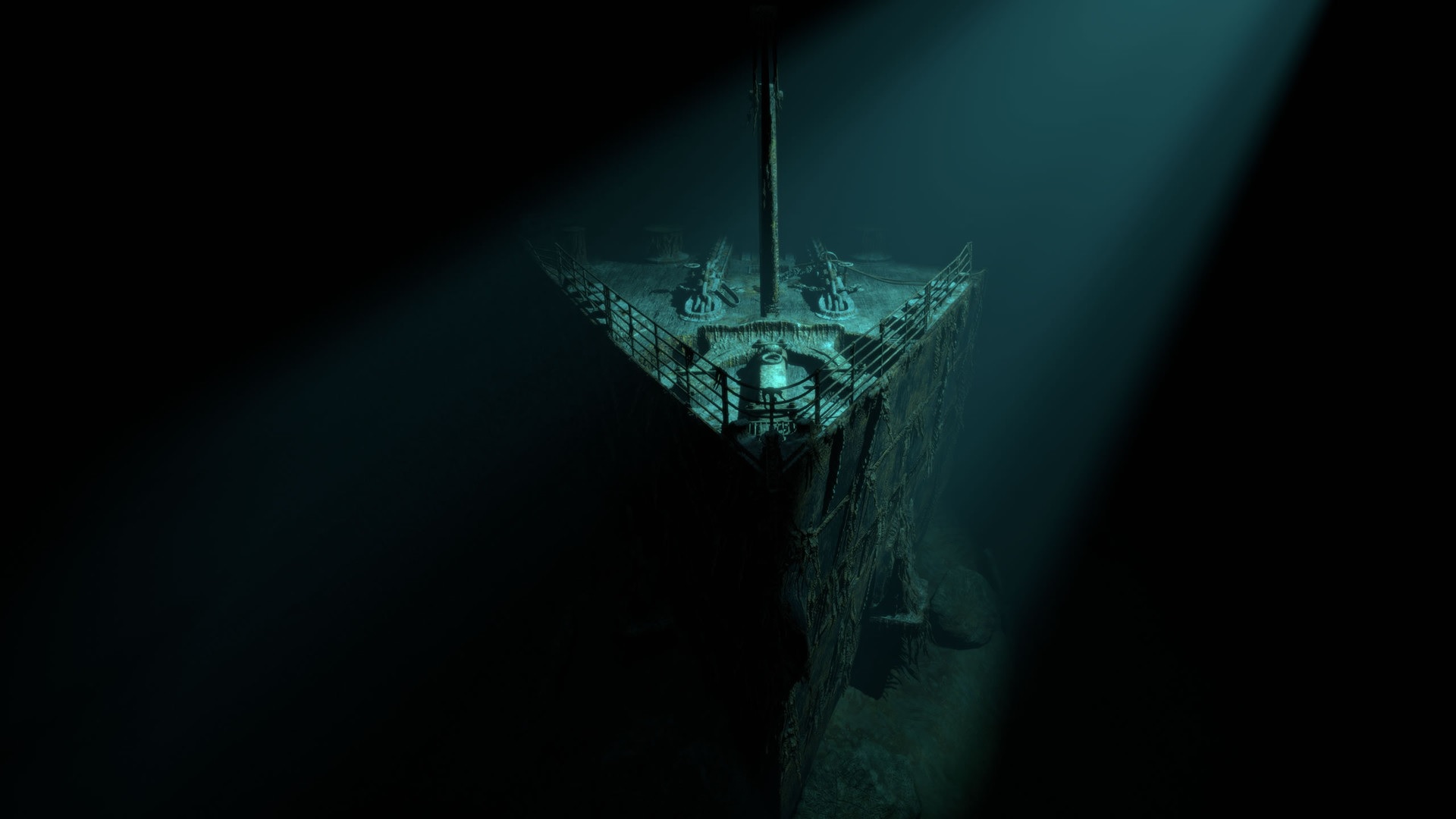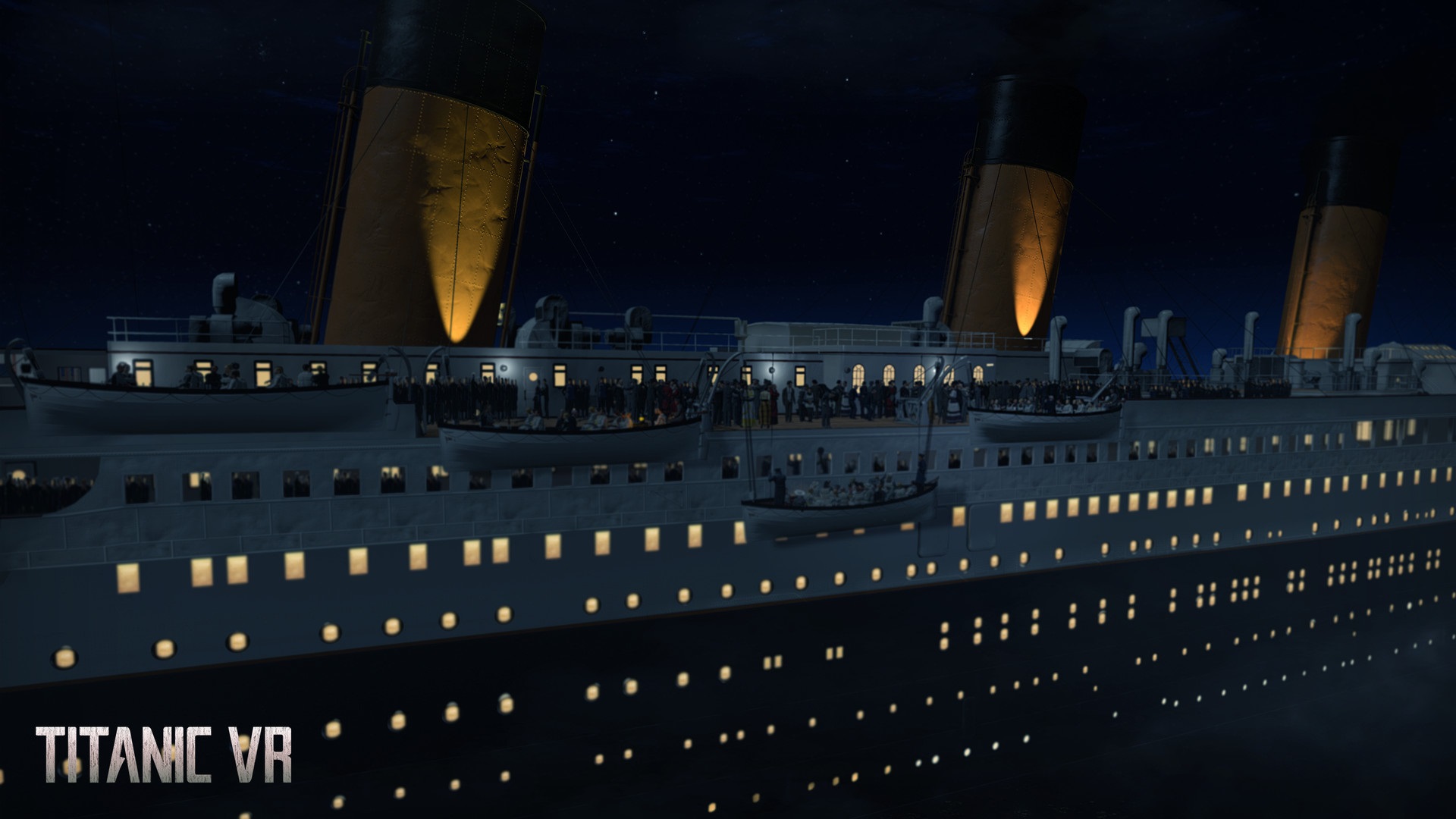When you say the word Titanic you can’t help but think Celine Dion, drawings of French girls and steamy windows. That’s a bit wrong, isn’t it? 1,503 people died when the ‘unsinkable’ vessel hit the ocean bed in 1912, nearly three-quarters of all passengers aboard, and yet time and Hollywood have weathered the impact those numbers should make. There’s a challenge for the so-called VR empathy machine if I’ve ever heard one.
The second project from Immersive VR Education, Titanic VR goes about restoring the human factor of the disaster in two fascinating ways. Though held back by some expected flaws, it’s one of the best examples of VR edutainment yet, turning what could easily be a mundane history lesson into an engaging and even emotional interactive experience.
Immersive really thought outside the box here. Instead of the obvious virtual tour of an authentically-digitized shipwreck, the developer has thinly disguised its virtual preservation inside a story-driven campaign. In the main part of the game you play as Dr. Ethan Lynch, a researcher that takes regular dives out to the wreck in a trusty one-man submarine to complete tasks for clients, chief of which is a woman writing a biography for one of her relatives who died in the incident. Five to ten-minute missions see you explore different parts of the ship, often in search of more clues that piece together the fateful events of that day.
It’s a winning approach that largely keeps your attention and intrigue throughout. Like Immersive’s own Apollo 11 experience or Curiscope’s Operation Apex before it, Titanic VR knows that gamers want to play games and builds its message around that, though it also falls into some of the same pitfalls that any developer is at risk of.
In between levels you’ll visit your research lab where you’ll report your findings and also preserve any artifacts you’ve brought back home with you. It’s the last thing I expected to be doing in a game about the Titanic, but I found myself surprisingly enamored by the clinical tasks of washing and freeze-drying anything from journals to pocket watches. There’s a newfound appreciation to be gained not just for the history but the real work that’s going into maintaining it, though it’s let down slightly by the unbearably cheesy voice acting and more redundant tasks like adding new upgrades to your underwater drone.
Exploration, meanwhile, is an initially fascinating experience that suffers somewhat from diminished returns. Whilst early excursions into the ship’s interior are often eye-opening, later levels come up with silly tasks like providing the lighting for a film director as he gloats about his award-winning work in a not-too-subtle dig at James Cameron. You can see why the developers would think this a refreshing palette-cleanser, but it drags on and the educational element is largely forgotten about for a bit. The same goes for an exhaustive chase through the wreck that has you follow a rare type of fish. It’s a decent attempt to mix things up but it goes on for far too long and leaves you frustrated.
Titanic VR is at its best when it’s got education at the heart. The journey to the wreck is filled in with gripping accounts from survivors taken from interviews over the past 100 years, for example, and inspecting rooms like a parcel office in great detail manages to completely lose you in the moment. The dialogue, meanwhile, seamlessly weaves in important facts without overselling them. The unavoidable mundanity of traipsing from rusted metal room to rusted metal room does eventually start to set in, though fun visual details like pulsating jellyfish and tiny crabs always give you something new to delight over.
Another big addition to the full version of the game is a short segment that travels back in time to the day of the crash itself. Though it’s missing the interactivity of the main portion of the game, it’s still one of Titanic VR’s most powerful elements. Based upon eye-witness accounts, you find yourself seated on one of the first lifeboats to leave the vessel as it begins to sink. Simply sitting there as part of the huddle of women and children so suddenly separated from their husbands, sons and siblings is distressing enough but there are several moments that really hit home. It’s a distinctly personal experience that brings the suffering closer than comfort would like, though it also spares you some of the truly gruesome details as you watch the behemoth disappear from afar. It’s a missed opportunity not to see more of the ship’s interior, too.
Perhaps Titanic’s biggest flaw is the somewhat muted presentation which, although serviceable, fails to match the ambitions of the content itself. This was a Kickstarter-funded project and thus Immersive’s resources surely only stretched so far, but the lack of certain sound effects and the somewhat rudimentary appearance of other characters limit the impact the experience can make at times.
As an entire package, Titanic VR is a thoughtful, engaging piece of VR edutainment with some great ideas and surprisingly powerful moments. Immersive VR clearly understands that, for a game to educate, it has to first be held to the same standards that we put upon any other experience and it meets many of those expectations with ease. Ultimately its muted presentation and padded-out campaign hold it back from true greatness, but it’s another crucial step for one of VR’s most important developers that suggests they’ll definitely get there one day.
Titanic VR is now available on Oculus Rift, HTC Vive and Windows VR headsets for $19.99. Read our Game Review Guidelines for more information on how we arrived at this score.


























